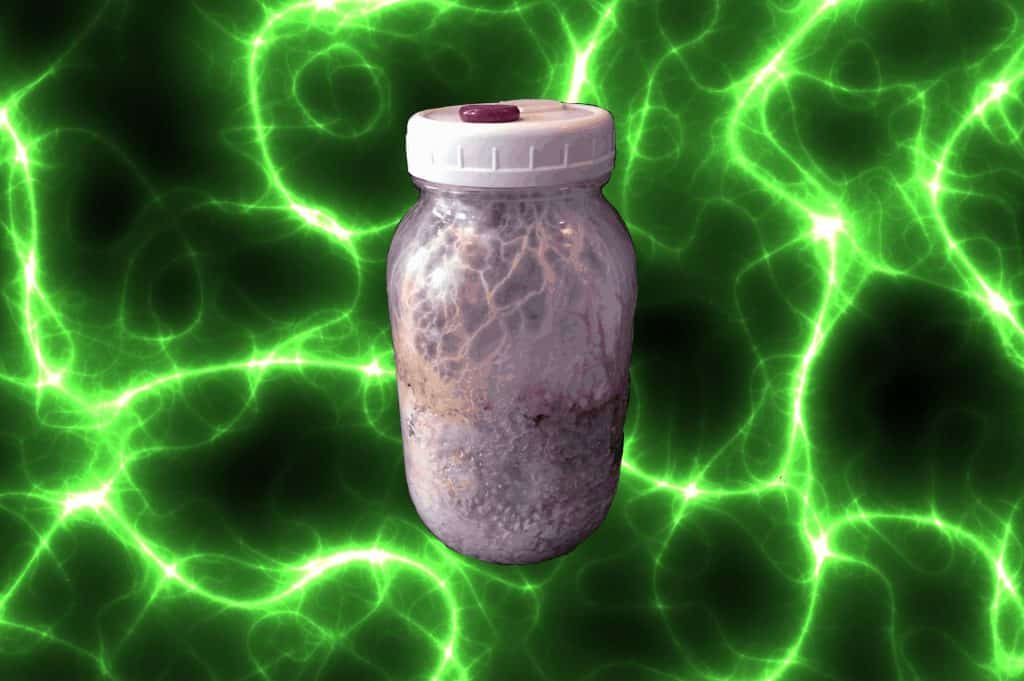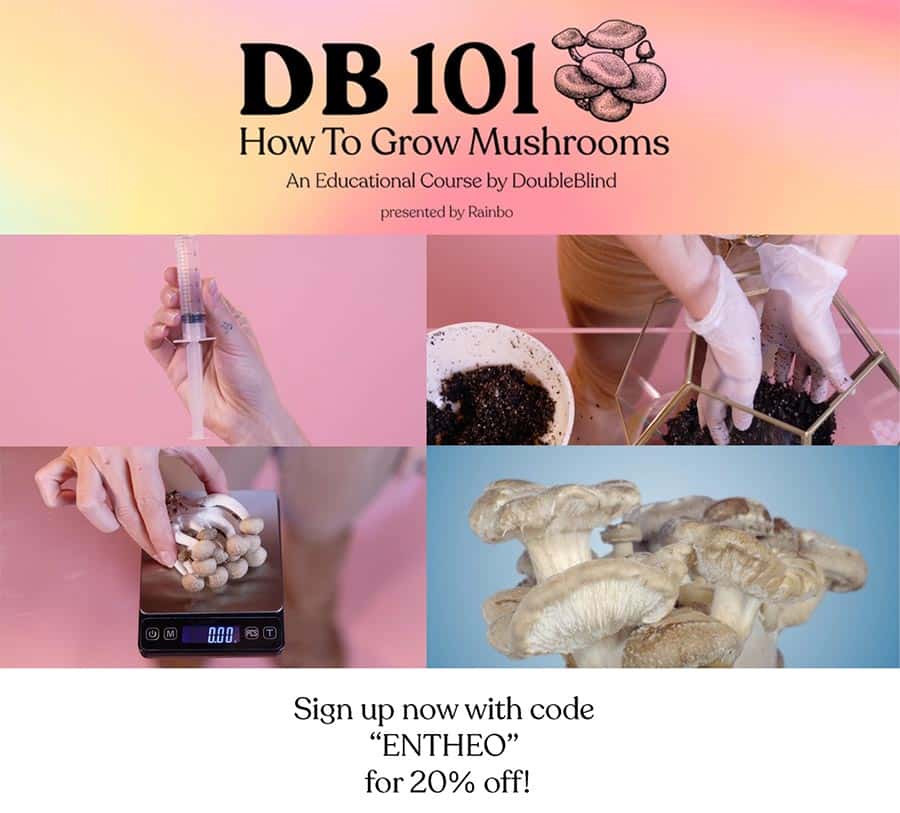A New Way to Grow Magic Mushrooms (Without the Shrooms!)

Growing magic mushrooms the traditional way comes with challenges – especially for people who’ve never done it before.
While growing the common Psilocybe cubensis mushrooms can be fairly simple, fruiting the mushrooms (growing the actual sprouting mushroom bodies that contain psilocybin) is a more involved part of the mushroom growing process. It requires frequent attention, a fruiting chamber of some kind, and a number of different inputs – making growing mushrooms quite a different prospect to growing plants!
Once you’ve obtained some mushroom spores, and acquired all the other materials you’ll need, the process takes several weeks of tending your incubating fungi… and that’s assuming you live in a country where it’s legal to grow your own magic mushrooms!
Although all mushroom growing techniques require a certain amount of knowledge and equipment, mycologists have been experimenting with new ways of obtaining large quantities of psilocybin-producing fungi without making too much of an impact on the environment, or requiring constant attention…
And two such intrepid explorers have recently discovered that magic mushrooms can be grown… without the mushrooms.
By this, we mean that some species of magic mushrooms can actually produce the psychoactive molecule psilocybin in their mycelium, without requiring the formation of the fruiting bodies (mushrooms) that we usually chew on.
The Myceliated Grain Tek
Mycelium is a network of branching, fluffy white strands, which is the part of the vegetative fungal life cycle that occurs underground, before the formation of the spore-producing mushrooms that sprout above ground. Mycelium can grow on grain, such as oats or rice.
The advantage of growing mycelium on grain is that grain is cheap, mycelium can grow happily on its own without the need for much attention, and large quantities of mycelium (and hence, psilocybin) can be produced at one time.
The full myceliated grain tek can be found here, and we’re not going to lie – it’s a little complicated. Just like with standard mushroom growing techniques, the first step is obtaining a source of fungal spores (and a glovebox for sterile inoculation work will be required), and then create a “liquid culture” from which you can start growing the mycelium. This can be a difficult first hurdle to overcome, and spores can be illegal to purchase in some states and countries.
But once you’ve got your starting media, this myceliated grain tek becomes very easy to follow. You then prepare your chosen grain, sterilize the grain in jars, and inject your sterile liquid culture into these. The jars can then simply be left for three months, after which the grain is dehydrated and stored. It can be brewed as a tea, or powdered to give you an easily-measurable quantity of psilocybin, which can be added to smoothies or drinks. Both the tea and the mycelium grain is much milder tasting than mushrooms, and the tea in particular is considered to be much smoother on one’s system than eating mushrooms can be.
Why This Technique?
One co-author of the linked guide tells EntheoNation: “Fruiting mushrooms in traditional teks is an involved process requiring attention, inputs and a fruiting chamber of some kind. In contrast, this technique provides a simple, very low maintenance, low input, efficient and discrete approach with a very low environmental footprint for producing your own psilocybin, that is easily scalable to suit the needs of the individual cultivator.”
Enthusiasts are already experimenting with different species of mushrooms – as not all magic mushrooms produce viable amounts of psilocybin in the mycelium phase. Two particularly promising species identified so far appear to be P. hoogshagenii/semperviva var. convexa, which successfully produces psilocybin after two months using this method (and is even more potent after three months), and Psilocybe pseudoaztecorum. Others that could potentially produce similar quantities of psilocybin as mycelium on grain compared to fruiting mushrooms are Psilocybe bohemica, Psilocybe samuiensis, and Panaeolus subbalteatus.
One of the other benefits of this grain tek approach is that it makes otherwise quite inaccessible Psilocybe species held in great shamanic reverence accessible. By doing so, it opens up more cultivation possibilities, putting more species on the table than P. cubensis, and the sub-strain variants of P. mexicana from which sclerotia/truffles are derived. While P. cubensis is the ‘go-to’ species of growers, it occupies a slightly lower rung of the ladder of shamanic preference among indigenous Psilocybe mushroom-using groups in Mexico, and this approach allows one to explore a wider variety of shamanically revered species.
Finally, the myceliated grain tek could be used in countries where growing active mycelium is allowed, but growing the fruiting bodies (mushrooms) is illegal – like the Netherlands.
We’re looking forward to seeing more breakthroughs in mycology that will help bring the benefits of magic mushrooms to more people around the world!


Hi, I’m rusty on ethnobotany, but never gave up my interests. In the late 1980’s and early 1990’s I was corresponding with Richard Evans Schultes and Albert Hofmann, and even have some of Schultes’s old Christmas cards around tucked into a book somewhere.
I have flown through the depths of intergalactic space and occasionally wondered how I would ever find my way back to my side of the universe, but I just kept myself together and enjoyed the voyage. Happy trails to you all.
Very cool Gary we would love to hear about it even if this thread is like 2 years old. Have a good day duderrrr
is there a way to know if a species’ mycelium has psilocybin? does it stain blue?
Ive also seen P. Cubensis cultures in agar medium stain blue….there is definitely some psilocybin presence in P. Cubensis Mycelium
Grain to grain, then fruit in a monotub. Far more reliable and I’m pretty sure less work. 3 months to colonize a jar is outrageous. 10 to 14 days should be the ideal point. Even using a liquid inoculate would prove far better. Or if that’s somehow too much work even a tiger drop would yield much quicker results. If you’re going to put all this work and effort in but forgo fruiting over a 50 cent bag or a 5$ monotub. You’re crazy
I found this very interesting, thank you.
Thank you! I have been salivating at my rice grain jars and now I know this is an option for my sacred plant medicine. Many Thanks 💓. I also plan on replicating this process with lion’s maine and oysters.
Stamets products are all mycelium on brown rice that is dehydrated, powdered and placed in caps for sale. Your Lion’s Mane meant for medicinal purposes would work great and save a load of time by not fruiting.
Thank you! Mush love🍄 looking for that immunological benefit, food is medicine. 💗 Fermentation is the ancestral way!